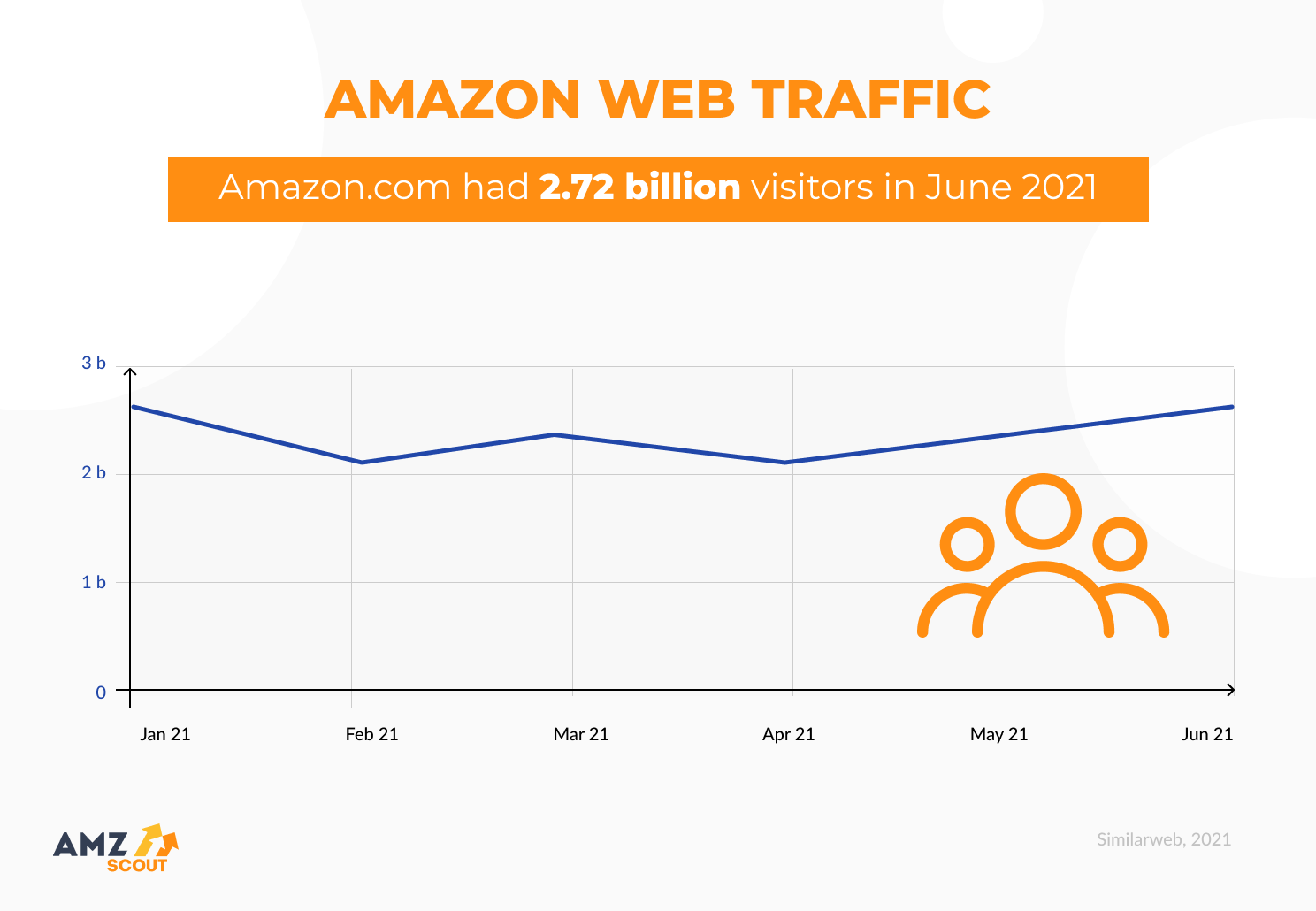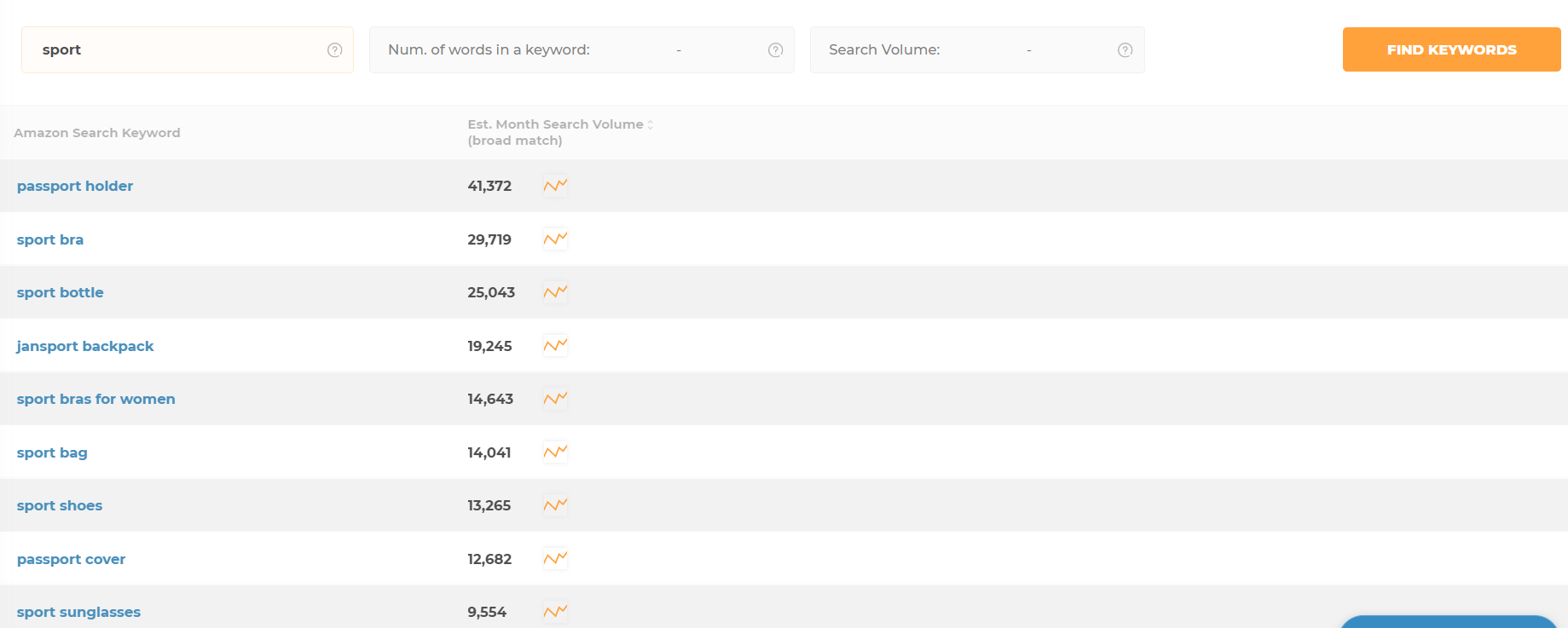
6 Amazon FBA Tips to Start a Successful eCommerce Business
Last update: 30 August 2023 at 02:35 pm
If you want to create a successful eCommerce business plan, Amazon is a clear winner to get started. But when creating a successful Amazon FBA business plan can still be challenging. That’s why we’ve created a cheat sheet of Amazon FBA tips to get businesses started.
But with all the other options available, what makes Amazon suitable for eCommerce business owners? We will answer that question in this article.
Why is Amazon a Good Place to Start?
A big reason why Amazon is great for prospective business owners comes from potential. This potential comes from the following factors:
Good Traffic
As of 2021, Amazon expects to gain control of 50% of the eCommerce market. That means other competitors share the remaining 50%, not even coming close to Amazon’s margins.

Amazon’s traffic potential provides you with potential customers other sites struggle to gain. When creating profitable products, Amazon has no shortage of potential buyers.
Turnkey Solution
Amazon’s automated systems allow you to create a turnkey business. With a combination of automation and delegation, you can limit your work to a couple of hours each week.
Other eCommerce platforms require a bit more of a personal touch. Positive Amazon product reviews almost always translate into a guarantee for more sales.
FBA Program
Fulfillment By Amazon, otherwise known as the FBA program, enables you to allow Amazon to handle all logistics and distribution plans of a business. By shipping your stock to a fulfillment center, Amazon handles shipping for you.
As a result, you only have to worry about keeping inventory in stock and marketing your product. A business that enables you to focus on big-picture marketing strategies is where you want to be.
Low Barriers to Entry
When you hear the term “anyone can do it,” it almost always isn’t literal. When it comes to making an Amazon business, you need a bank account, a state-issued ID, and a way to prove you live where you do.
Individuals who are looking to create a “side hustle” can do so through Amazon.
You don’t need a business license or tax identification number through Amazon.
6 Amazon FBA Tips To Contribute To Your Business Plan
If you are wondering how to start creating an eCommerce business on Amazon, here are six tips you can use to contribute to that dream:
Tip #1: Decide What to Sell Early
When you decide what to sell, you don’t always have the budget to get it. If you are like most FBA sellers, you might not have more than $500 or $1000. If you want specific tips on starting with a limited budget, check out this post.
A big part of that limited budget needs to be towards deciding what you’ll be selling online. Where you don’t have the budget, you can sacrifice the time and break down finding this information about your potential products:
- How many people search for your potential products?
- How many sales can you make with this product?
- What does the competition look like in your niche?
- How easy is your product to get?
- What is the size and weight of your product?
- How much does your product cost in the target market?
You’ll want to have answers to all of these questions when deciding on your product. The best products are easy to ship, moderately priced (about $15 to $30) and suitable for everyday use.
You are on the right track if you can decide on a product within a niche you want to sell that meets those three requirements.
Starting an eCommerce is no easy task, so you may want to ask for some help from a qualified eCommerce agency to help your business get off the ground.
Tip #2: Choose How To Source Your Products
For the 2nd of our Amazon FBA tips, once you’ve decided on the right product, you need to determine how you want to get those products. There are many methods to get this product, but the one for you depends on your business plan.
Here are some of the most popular options:
- Private Label Selling – Private label products selling involves you reaching out to manufacturers to create a product you can put your brand label on. This option is excellent for long-term plans, as it enables you to grow a brand.
- Dropshipping – Dropshipping is the process of investing money into another person’s product to resell elsewhere. You have no control over inventory or products, allowing for a low upfront investment.
- Retail Arbitrage – Retail Arbitrage involves buying items on sale at physical retail outlets and reselling them at a higher price in your store. Because you are selling other people’s products, you are sharing product listings with others.
- Online Arbitrage – Similar to retail arbitrage, this process involves buying items online on sale and reselling at a markup. It has good potential earnings but suffers from the same weaknesses as dropshipping and retail arbitrage.
- Wholesaling – Wholesaling is purchasing bulk products from established brands to resell them. It enables you to take advantage of well-known products, but you risk competing with established resellers.

What you choose will heavily depend on our next section.
Tip #3: Create an Amazon FBA Business Plan
An Amazon FBA Business Plan involves breaking down your plans for future growth. This involves a wide range of business desires which include the following:
- An executive summary to summarize your overall plan
- The main objective of your company (what do you want to do for your customer)
- The products your company sells
- A value proposition (what makes your company different)
- A marketing plan (what do you want people to see of your company?)
- An operational plan (what you need for your company to function)
- Organizational structure (who are the business owners, stakeholders, or other essential employees?)
- A financial plan (how do you plan on making money and spending it?)
As a small business owner, you might find some of these sections are needlessly complicated. However, I would argue that this is no different from personal financial business planning.
If you have a goal you want to achieve, you break down your priorities. You also have daily routines and a general desire of how you want others to see you.
These are no different for your company, as you’ll want to be prepared for any eventuality. As your Amazon seller business grows, you can change it to fit your needs.
Revisit your business plan at least once a year. Doing so is a good grounding exercise you can use to remind yourself why you sell in the first palace.
Tip #4: Pay Extra Attention to Inventory Management
Once you have all of the complicated stuff down, you must practice the basics. One of the basics that you’ll constantly be addressing is inventory management.
Inventory management enables you to keep stock of the products you have available. This information will be available on Amazon’s dashboard, Seller Central.

The dashboard provides you with good information that enables you to create various product listings. It also has tools you can use to warn you of potential stockouts.
Amazon Sellers will always tell you about how stockouts ruin their rankings. If you want to be one of the best sellers on Amazon, you want to avoid stockouts at all costs.
When you first start, pay extra attention to managing your product quantities. Doing so can make you stand out compared to other beginners.
Tip #5: Optimise Your Listings for Search Potential
If you have potential new customers, your best way of getting to them is through Amazon SEO.
SEO, otherwise known as Search Engine Optimization, is the process of targeting focus keywords.
You’ll want to mention these keywords once or twice (as appropriate) throughout your product descriptions. This informs Amazon of the overall topic of your product.
There’s also a section for backend keywords (dubbed “Search Terms”) on your product listing. Be sure to take advantage of keywords at multiple competitiveness levels.
It starts with a seed keyword (a one or two-word phrase describing your item) and expands into long-tail keywords (detailed descriptions of your product). Those long-tail keywords need to be relevant, meaning that people will find what they want by searching for it.
You only have so many keywords, so be sure to give yourself the best opportunity to grow by not relying on the highest search volumes.
Instead, you’ll want to hit a mixture of search volumes and organic search engine ranking, giving you more significant potential to sell in less competitive keyword targets.

Once you make enough sales and good product reviews in the lower-end keywords, you can become more competitive in other target keywords. This brings us to the last of our Amazon FBA tips.
Tip #6: Don’t Waste Money on Ads
If you ask anyone about your Amazon FBA Business Plan template, they’ll ask you about your advertisement plans. Because these third-party companies make money on your advertising dollars, they have some reasons to encourage you to spend money on paid ad placement.
While ads can help you get some initial traction, it’s essential to understand your goal is to increase your profit margin. To do so, you must win the war at Amazon SEO.
So once your product starts getting off the ground, and you see significant sales, change your strategy over to something else. Don’t waste money on ads if they aren’t giving you sales.
Have a diverse range of revenue streams that don’t rely on advertising. That way, you can direct advertising dollars towards launching new products or hiring staff.
Advertising is suitable for short-term goals, not long-term objectives.
Conclusion
If you want a successful eCommerce business, Amazon is a clear winner on how to start. By finding an ideal product, a way to source it, and an optimized keyword target, you’ll have all you need to get started.
We hope this short list of tips helps you get started in the creation of your eCommerce business. Thanks for reading!





